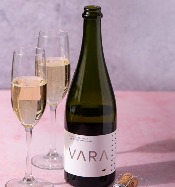For those of us who read wine labels in the same way we read the instructions that come with Ikea furniture, label designations are a confusing mix of specific and maddeningly general information. Some label designations are successful: Champagne comes from Champagne. Bordeaux is a blend of Cabernet Sauvignon, Merlot, Cabernet Franc, Petit Verdot, Malbec and a squidge of Carménère grapes.
But then there are defiantly general label designations, like “Red Wine” that inspire the kind of annoying questions that lead a person down google rabbit holes. Can a bottle labeled Red Wine include a touch of white wine like Viognier? How red does the wine have to look? What about white wine made from red grapes?
Washington State’s Columbia Valley American Vinicultural Area epitomizes both the undebatable specifics and squint-inspiring generalities of a label designation. The AVA covers a sweeping 85 miles in width and 200 miles in length. It stretches across Washington and Oregon and their respective 23 counties. 11-million acres host over 99% of all of Washington’s wine grapes.

The AVA also contains nine smaller AVAs and a dauntingly diverse list of varietals. Here, finicky clusters of Pinot Noir stay air-dried and safe from mold. Gewürztraminer basks in manicured glory on high-UV hills, and Zweigelt can gamely fill blocks wherever the need for an abundant vineyard might be. In the Columbia Valley, it isn’t unheard of for heat-loving Tuscan varietals to thrive within miles of cool blocks of crisp Sauvignon Blanc.

The physical characteristics found in the vastness of the area make for the singular qualities of its wines. While the Columbia Valley AVA covers a lot of ground, it follows the same deep rut of basalt that was carved by the natural catastrophe of the ancient Missoula Floods. The Missoula Floods were a repeated assault of an angry slurry of icebergs and rocks released by Lake Missoula in the warm days that ended the last Ice Age. Their power broke through the Cascade Mountain range, opening up a passage from east to west and creating a wide fertile corridor.

The sharp corners that were etched into the flat, endless Eastern Washington horizon have been softened by slopes of fine wind-blown silt and sand soils. High above and nestled alongside the Columbia river grow neatly kept rows of a dizzying variety of wines. While incredible vineyard management and winemaking are at play here, it is the mix of good drainage and mineral-rich soil that are responsible for the distinct nose of a Columbia Valley AVA wine.
It is that nose that wins awards like Maryhill Winery Proprieter’s Reserve Chenin Blanc, which was named Best Chenin Blanc in the 2021 San Francisco International Wine Competition. The wine’s floral minerality is in thanks to the region’s warm days followed by the easy evening breezes that travel the canyons and tuck into the many surprising little coulees of Columbia Valley. Maryhill Winery itself embodies the aching beauty of the Columbia Valley and the truly inspiring views that truck on forever.



